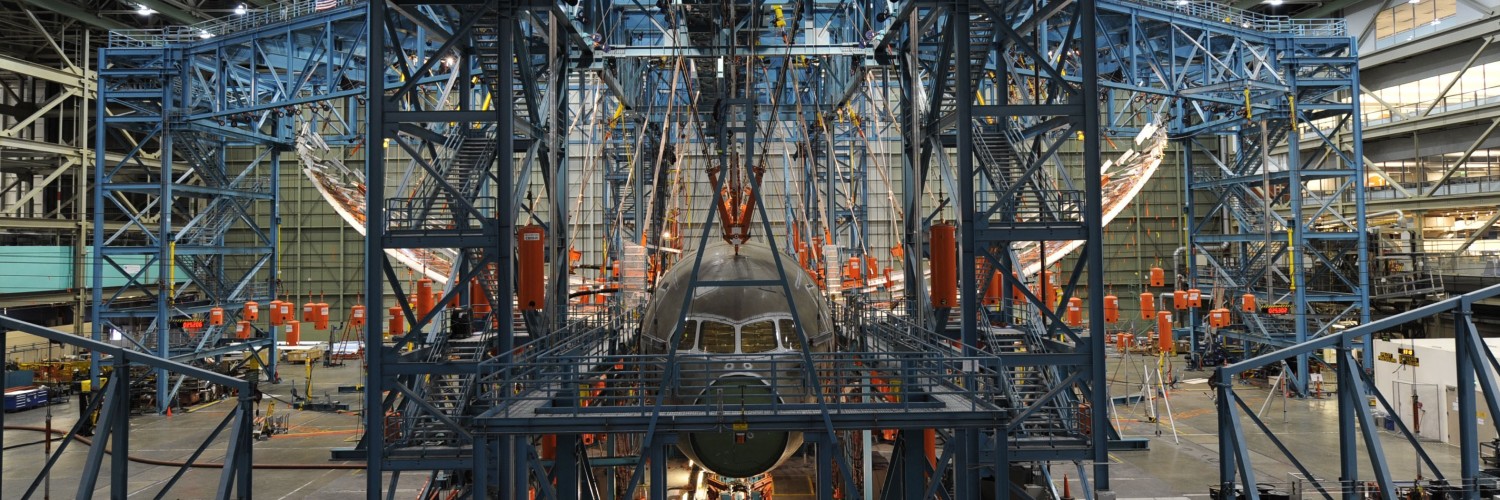
How Much Can an Airplane Wing Bend?
Bending wings are a common cause for concern among passengers. Who hasn't been in a plane thinking, "well... isn't that too much?". Here, we show you why bending wings should not be a concern.
Wing structure
A good wing should have low weight, high strength and some degree of flexibility. Making the entire wing of solid aluminium might make it strong, but it will definitely not save weight. Therefore, aircraft designers use what it's known as semi-monocoque design.
The basic idea of this design is to take slices of the wing (known as ribs) and connect them with an aluminium skin to form the wing volume. To prevent the skin from buckling when the wings flex, small support bars known as stringers are placed along the inner side of the skin. The stringers redirect these bending forces to the main load bearing structures of the wing: the spars. These are thick and strong bars runnning from the wing base to it's tip. Most wings are built with two spars: the front and rear spars.
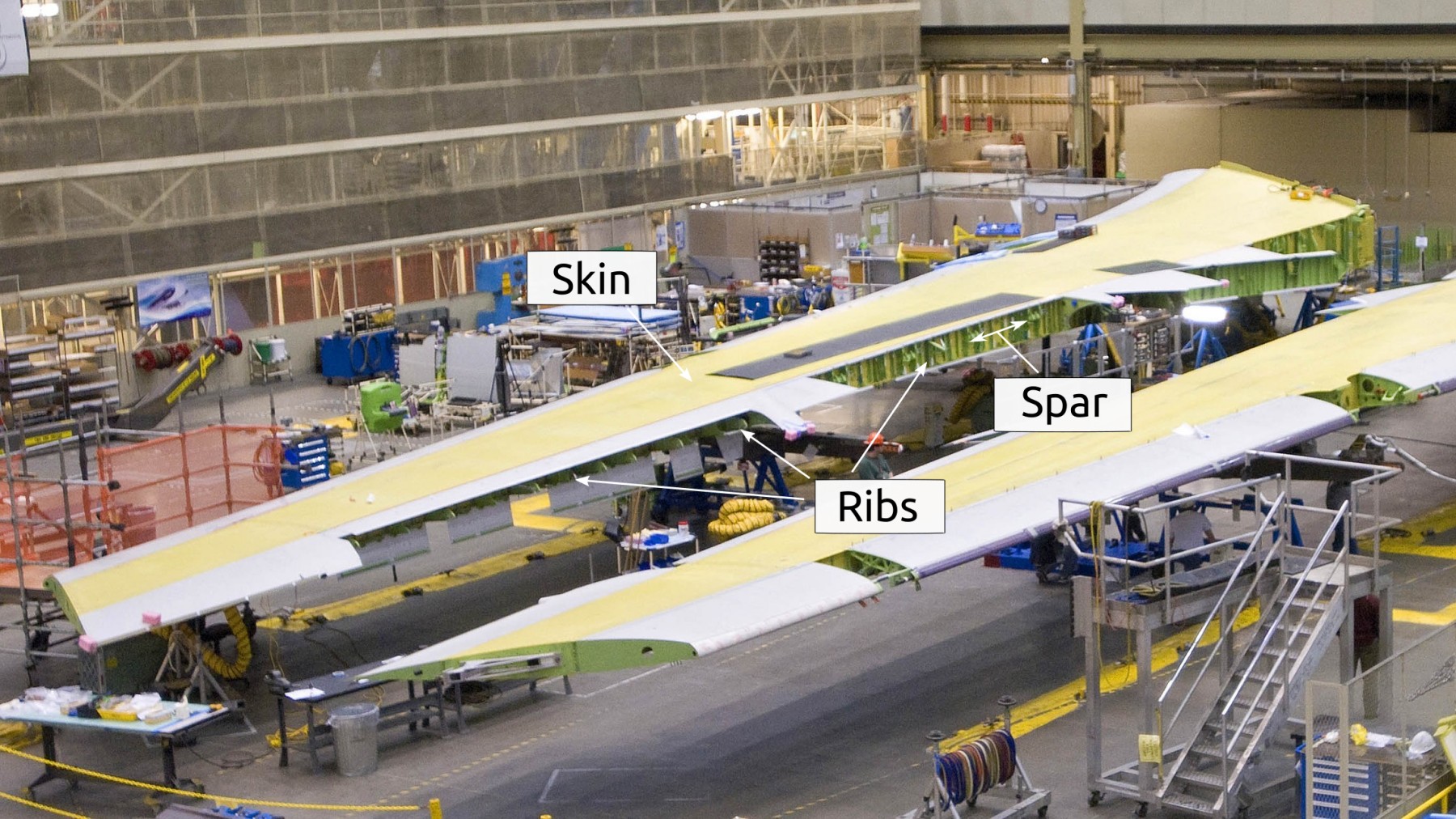
The wings and fuselage are connected together at the strongest part of the plane: the center wingbox. This section is designed to take all the loads from the wings and the landing gear. The connection between the wingbox and the wings is done with the so called prickle fork, which, as the name indicates, has a fork-like structure that tweezes both pieces together.
Aluminium and carbon fiber
Most wings are made of aluminium alloys. Why? Because of their almost perfect combination of light weight, good corrosion resistance, high strength and flexibility. For comparison, steel weights 2.5 times more and has many corrosion problems in humid environments. The most common aluminium alloys used in planes are:
The 2000 series is mainly used for the fuselage, and the 7000 for high strength components such as spars and stringers.
Airline manufacturers are also sprinting to find more efficient options than aluminium alloys. The current focus is on carbon fiber composites, which are basically a mixture of epoxy resins and carbon fiber. The Airbus A350XWB and the Boeing B787 wings are made of about 50% composites. The Boeing B77x to be introduced in 2025 is also designed with composites, and the weight reduction is so large that Boeing was able to extend the wings by 7 m (23 ft). To make the size compatible with current airport gates, Boeing has designed the wing tips to be foldable.
As with all new technologies, regulators have kept a close look to the development of these new “plastic made” wings. Contamination of the composite mixture during the manufacturing process was reported on the Boeing 787, the effect was a very small decrease in strength, keeping it still within the safety margins.
How much can the wing flex before breaking?
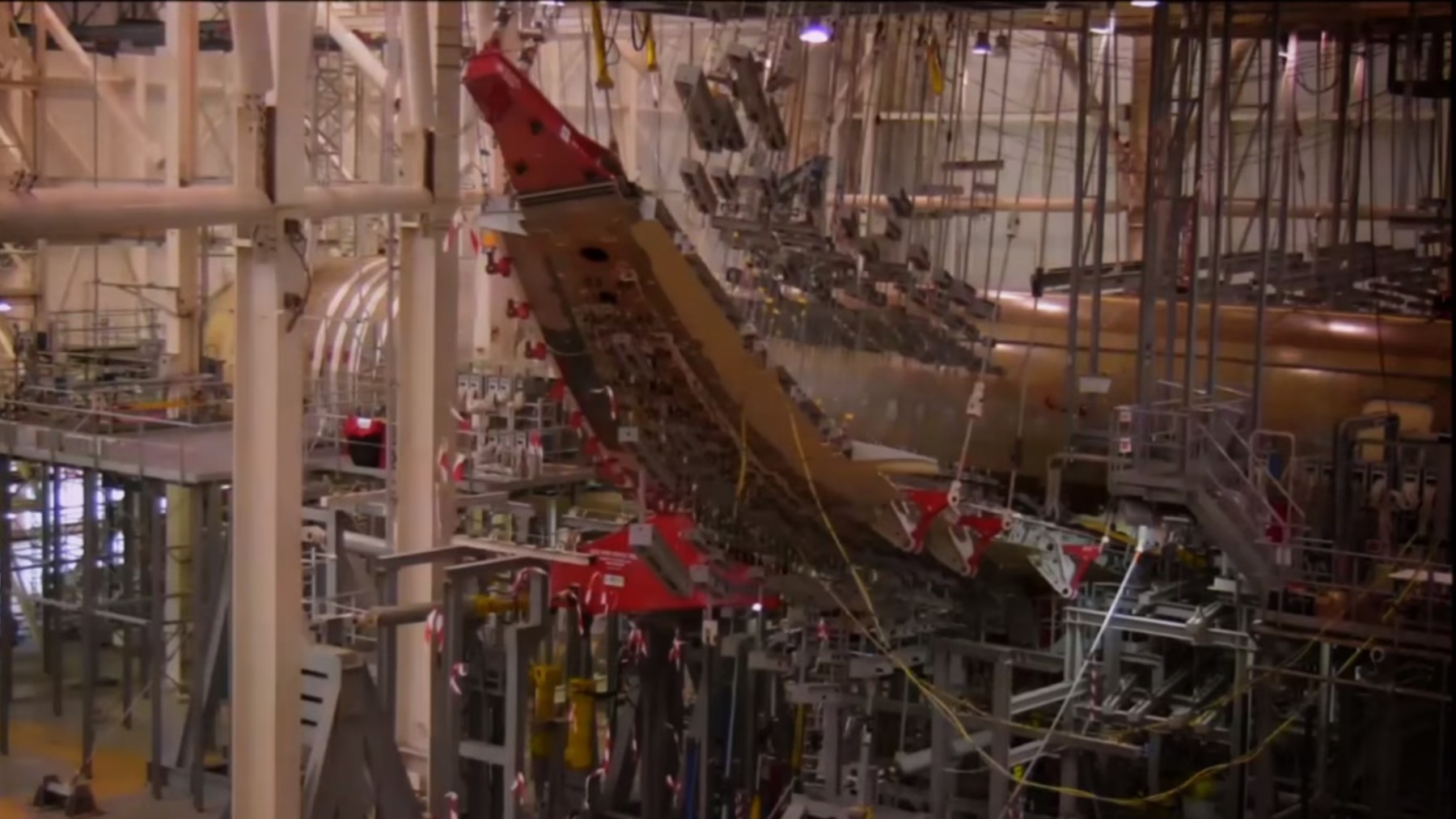
Manufacturers are required to perform destructive tests to measure the maximum loads that the wing can take before breaking. The degree of bending is quantified with the vertical displacement, that is, the height difference between the wing tip and its base. The test results from two recent tests were as follows:
To visualize how much 7.6 m displacement is, think about it as 2-3 apartment ceiling heights. In the B787 test, the load reached 1.5 times the design limits when the wing was at its maximum height. The design limits are obtained based on the maximum expected load during the entire lifetime of the plane plus additional safety margins.
Fatigue tests are also performed to determine the wing's capability to withstand repeated bending cycles. Before the Boeing B787 was released, the wings and fuselage of a prototype were loaded constantly for an equivalent of 100,000 flights, about 3 times the design life of a B787.
The goal of fatigue test is not to verify that the plane remains perfectly functional after all that time, but rather to define the maintenance procedures needed to anticipate deformations or cracks before these become a problem. Additionally, the data generated during the tests helps to validate the computational models used in the analysis.
Fatigue is the number one cause of mechanical failure in the industry (not only aviation), with some sources citing that about 90% of the failures can be attributed to it. Boeing and Airbus have not had a single case of complete wing breakup, but both have had issues with fatigue. In 2019 small cracks were discovered in prickle fork of old Boeing B737 NG models, and in 2019 as well cracks were found in the spars of the Airbus A380. Neither of these had safety implications as they were identified in time and corrected. But they were unexpected and costed time and money to the airlines.
Interaction with turbulence
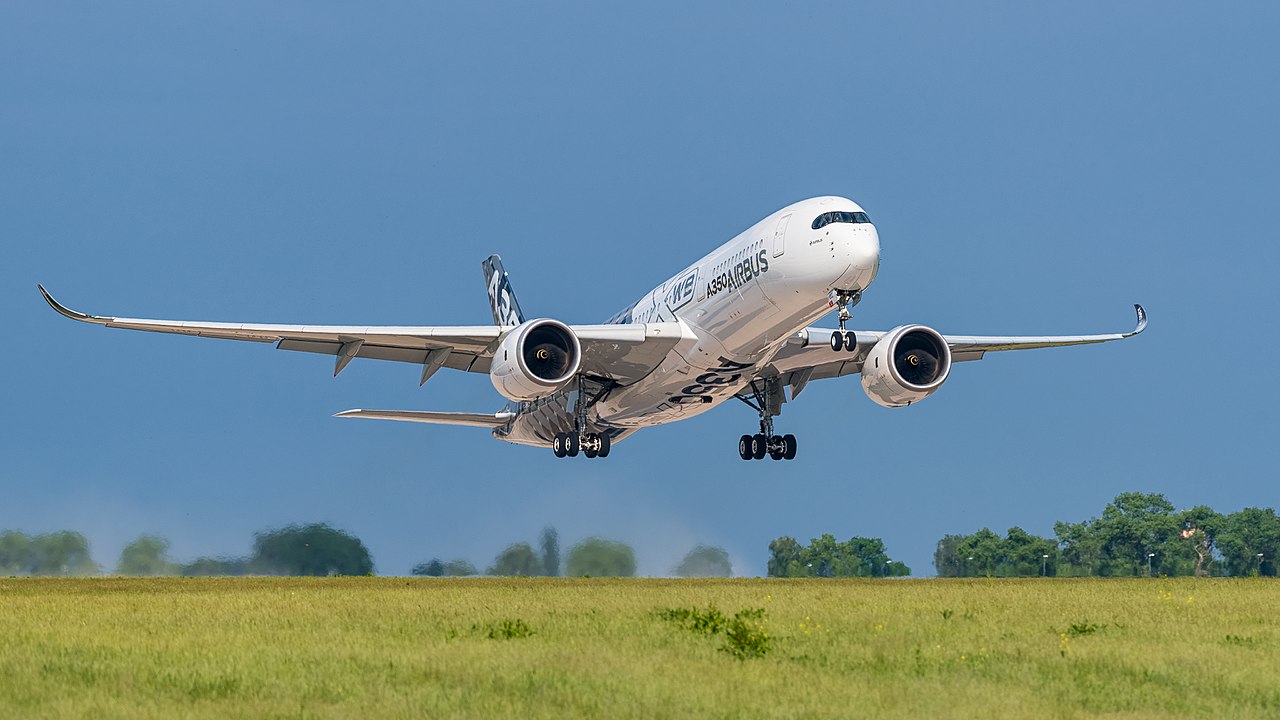
When flying over turbulence, the continuous flexing of the wings should not be a concern. Moderate turbulence? No problem. Severe turbulence? No problem either. The reason is what we explained before: the wings are designed to withstand bending cycles for very long periods of time.
But equally important, wings are designed to flex. Airlines don't want rigid wings that can hold their shape in the worst turbulence. This is because a flexing wing acts as a spring and reduces the sensation of turbulence for passengers. Looking it in a different way: by flexing, the wing is absorbing a part of the turbulence that you are not feeling.
One should not forget that when the plane is flying all of it's weight is literally hanging from the wings. The cylindrical fuselage does not create any lift, only the wings, so even if the wings look stable when flying through smooth weather, remember that they are still holding a few hundred tonnes. Bending forces during turbulence will not add up much!
Obviously, wings cannot take "any" force. As the destructive tests show, there is a point at which they break. The last known break in commercial aviation happened in 1981, when a Fokker F-28 entered into a large thunderstorm that drove it to 6g accelerations (like a F1 car accelerating) and shattered one of its wings. This was an extremely rare event. To our knowledge, there have been no others in this industry for the past 40 years.
Wing loading
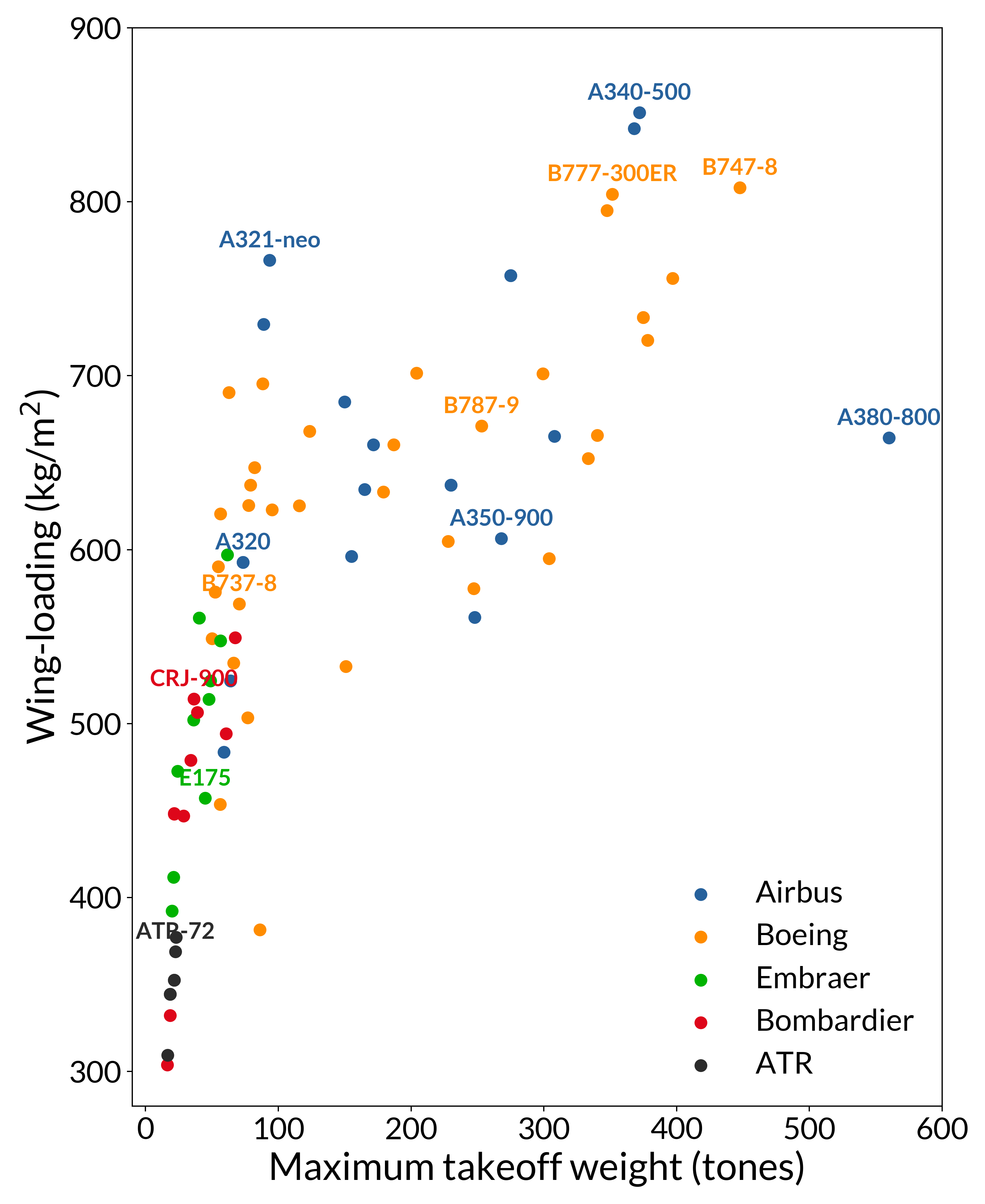
Turbulence affects all planes differently. There are several design features that matter, but the most important is the wing loading: the ratio of the plane weight to wing surface area. Small wing loadings mean that turbulence can interact more with the plane and lead to a more bumpy ride than a plane with high wing loading.
In general, small planes have a lower wing loading than larger ones. This is because the lift produced by the wings is proportional to the square root of the plane speed, but only linearly proportional to the wing area. Therefore, small planes which cannot travel as fast as large ones need larger wing areas, resulting in lower wing loadings. Birds, which obviously fly at lower speeds than planes, have a wing loading of just 1-20 kg/m2.
The Airbus A340-500 holds the current record in wing loading for commercial aviation: 850 kg/m2! Making it a top choice if you want to reduce the bumpiness of turbulence in your next flight.
Boeing's flexible wings
Boeing has a tendency to build more flexible wings than Airbus. This does not make it better or worse, it's simply a different design principle.
Flexible wings can improve passenger experience by absorbing more turbulence. On the other hand, they make maneuverability more difficult since it's harder to predict the wing fluctuations and adjust the ailerons accordingly. Flexible wings also increase the takeoff and landing distance.
The most flexible wings in commercial airliners are found in the Boeing B787-9. These wings are made of carbon fiber composites and have a high aspect ratio of 11 (length to width), making them thin and easy to bend. The Airbus equivalent of the B787-9, the A350 XWB, also has carbon fiber composite wings, but with a lower ratio of 9.5. Airbus has long been an advocate of the fly-by-wire system where automation is added whenever possible, this might be the reason why they prefer stiffer wings which allow a more precise control of the ailerons and other sections.

